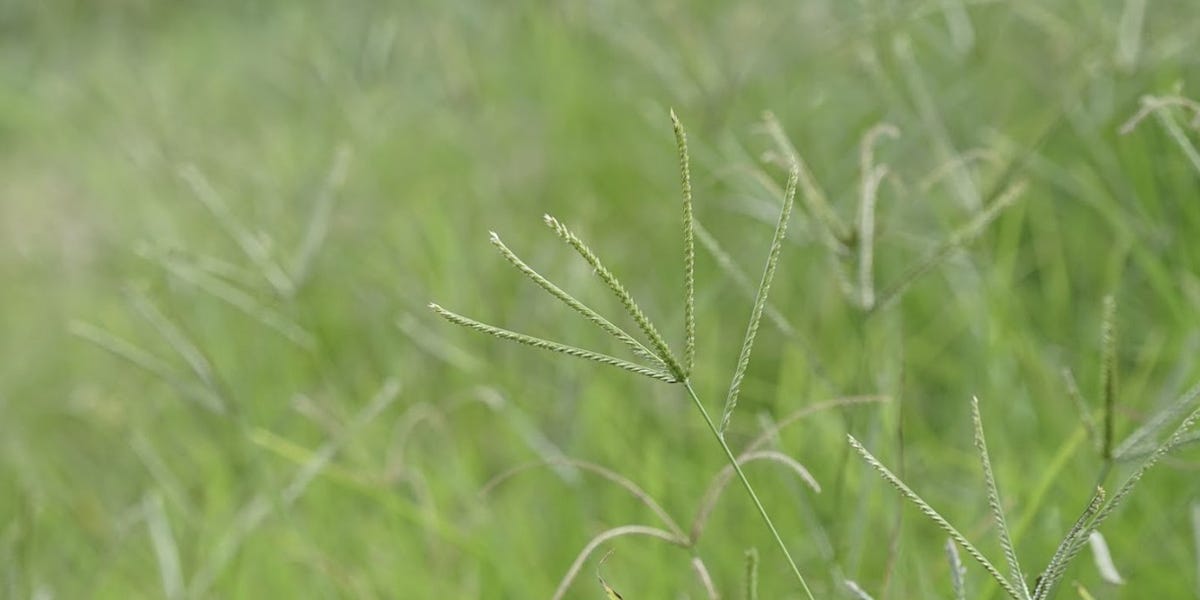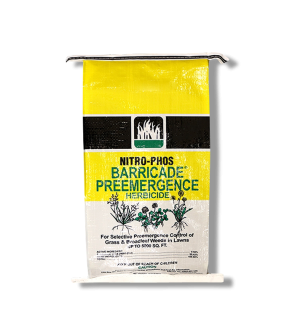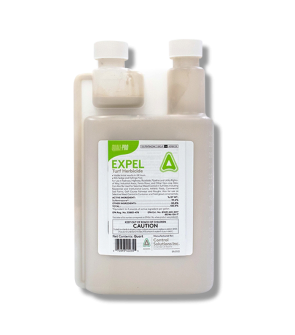Goosegrass Control
Most Effective Products
Goosegrass Control: How To Get Rid of Goosegrass
This page is a general DIY guide for controlling goosegrass. Using the products and methods suggested you get control of goosegrass. Follow this DIY article and use the recommended products, and we guarantee 100% control of goosegrass.
Goosegrass is a warm-weather weed that can easily stand out due to its spread out tufts of grass and grass blades that resemble little fingers. Goosegrass is a resilient grass that can establish itself in a variety of soils, even ones that are compacted and stressed. It is an annual grass, but in tropical conditions, it could be perennial.
Goosegrass is especially common in areas where there is a lot of foot traffic or along sidewalks or walkways. This explains why athletic fields and golf courses commonly get infested by goosegrass. Goosegrass also likes to grow in areas where the weather constantly fluctuates.
Goosegrass has thick leaf blades that are difficult to cut with a mower and even after a close trim, lawn grass will look unkempt and unattractive if the weed is present. Goosegrass is most prominent in warm summer periods but may persist into winter in temperate zones.
If you are tired of dealing with goosegrass on your lawn, our DIY goosegrass treatment guide will show you exactly what you need to do to get rid of goosegrass permanently. Following our step-by-step instructions and use our professional herbicide recommendations and you will remove goosegrass and save money too.
Identification

Before you can move forward with a treatment program, you need to properly identify Goosegrass by knowing what it looks like. Misidentification of goosegrass can lead to you using the wrong herbicides, which can cost you time and money. Here are some traits to look out for when identifying goosegrass:
- Goosegrass is a dark-green colored weed with a whitish to silver coloration at the base of the plant, which can be seen in the center. It grows from the central crown with branches spreading out in a prostrate (or wagon-wheel-like) rosette pattern.
- Leaf blades and sheaths are smooth on both surfaces, but they can be lightly hairy near the base of the weed. The more this weed grows the lesser the hairs will be. Younger goosegrass leaves will have be folded in the bud then later on flatten out as the plant matures. The leaf blades of this weed are about 1/3 of an inch wide and 8 inches long, but on average they reach 2 feet long when they are left to grow.
- After germination, goosegrass will produce flowers that appear as finger-like spikes. These flowers are actually seedheads covered by a light, layer of fruit tissue. Each seedhead contains 2-7 spikes that form at the tip of the seed stalk, resembling a zipper. Two rows of flattened spikes appear along each spike.
Use the descriptions and image above to help you to identify goosegrass. If you are not sure whether the weed on your lawn is goosegrass or not, contact us and we will properly Identify the plant for you as well as give you the proper product recommendations and tips on how to kill goosegrass.
Inspection

After you have confirmed that the weed you are encountering is goosegrass, you can then move forward with an inspection. During this phase, you will need to pinpoint the areas where goosegrass is growing and what the conditions of the area are which are allowing the weed to thrive. This will help you to determine where to focus your herbicide treatment.
Where to Inspect
Goosegrass grows in compact, wet soil or areas with thin turf cover.
Common sites for this weed to appear are agricultural fields, open grounds, landscaped areas, gardens, crop fields, road sides, railroad tracks, orchards, parks, grazed pastures, athletic fields, golf course turf, and other disturbed areas.
What To Look For
Goosegrass will begin to germinate when soil temperatures are between 60-65 degrees Fahrenheit. Look for grass that are growing in spread out tufts where the blades spread out like fingers.
Another distinguishing trait is that this grass can stick to your clothing if you brush up against it because of all the small little hairs it has.
Treatment
Be sure to wear the proper personal protective equipment (PPE) when mixing and applying any herbicides.
Controlling goosegrass can be particularly difficult since goosegrass has been known to become completely resistant to a variety of pre and post-emergent herbicide applications. Our recommendations have the best potential of managing the goosegrass on your lawn.
For goosegrass that is already established, apply Expel Turf Herbicide, which is a selective, systemic herbicide that does a great job against goosegrass and other weeds while sparing harm to desired turfgrasses.
Step 1: Measure Yard and Mix Expel Turf Herbicide

Deterimine how much Expel Turf Herbicide to use by measuring the square footage of the treatment area. To do this, measure the length and width of the treatment area in feet then multiply them together (length X width = square footage). For acreage, take the square footage and divide it by one acre (square footage / 43,560 sq. ft. = acres).
To get rid of goosegrass in cool-seasoned turf, apply 4 to 8 oz. of Expel Turf Herbicide per 10 gallons of water per acre.
To get rid of goosegrass in warm-seasoned turf, use 8 to 12 oz. of product per 10 gallons of water per acre.
We recommend using a spray rig due to this products high volume spraying applications.
Step 2: Apply Expel Turf Herbicide
 Once your product is thoroughly mixed, broadcast Expel Turf Herbicide evenly over the area.
Once your product is thoroughly mixed, broadcast Expel Turf Herbicide evenly over the area.
When applied properly, affected weeds will yellow and begin to die. A follow-up application may be necessary if signs of recovery are observed.
A reapplication with Expel Turf Herbicide may be made after 35 days.
Prevention

Once goosegrass has been eliminated from your property, you will need to implement some preventative measures which will ensure that this weed does not return.
- The best way to keep Goosegrass off your lawn is by preventing it from growing. We recommend using a pre-emergent called Barricade Pre-Emergent Herbicide Prodiamine Granular. When applied at the right time, this will help to keep goosegrass seeds from germinating on your lawn. Depending on your turfgrass type, Barricade Pre-Emergent Herbicide Prodimaine Granular can be applied at a rate of 2.5 to 5.94 lbs. per 1,000 sq. feet. Load the measured amount of granules into a calibrated hand or push spreader. Next, apply the product until your treatment area is covered evenly to get a uniform application. After broadcasting the granules, you will then water the granules in and activate them with at least 0.5 inches of water.
- Some cultural practices can helps your chances in keeping goosegrass away is making sure your yard is healthy and densely planted with turf. Goosegrass is known to be persistent and will grow on bare areas if not managed right away. Overseed bare areas to prevent goosegrass seeds from germinating. Leaving no room for goosegrass to germinate will surely kill the unwanted weeds. Moreover, lawn mowers should be cleaned to eliminate seeds that may be left clinging on the mower. Aerate your lawn to remove the compaction in the soil and avoid overwatering to help lessen the chances of goosegrass making a comeback.
Key Takeaways
What is Goosegrass?
- Goosegrass is a difficult-to-control summer annual weed that has been popping up everywhere across the United States and other regions of the world.
How To Get Rid of Goosegrass
- We recommend post-emergent treatment of goosegrass by using Expel Turf Herbicide.
Preventing Reinfestation of Goosegrass
- Preventing goosegrass from making a comeback with Barricade Pre-Emergent Herbicide Prodiamine Granular before the growing season to keep goosegrass weed seeds from germinating.













































































































































































































































































































































































































































































































































